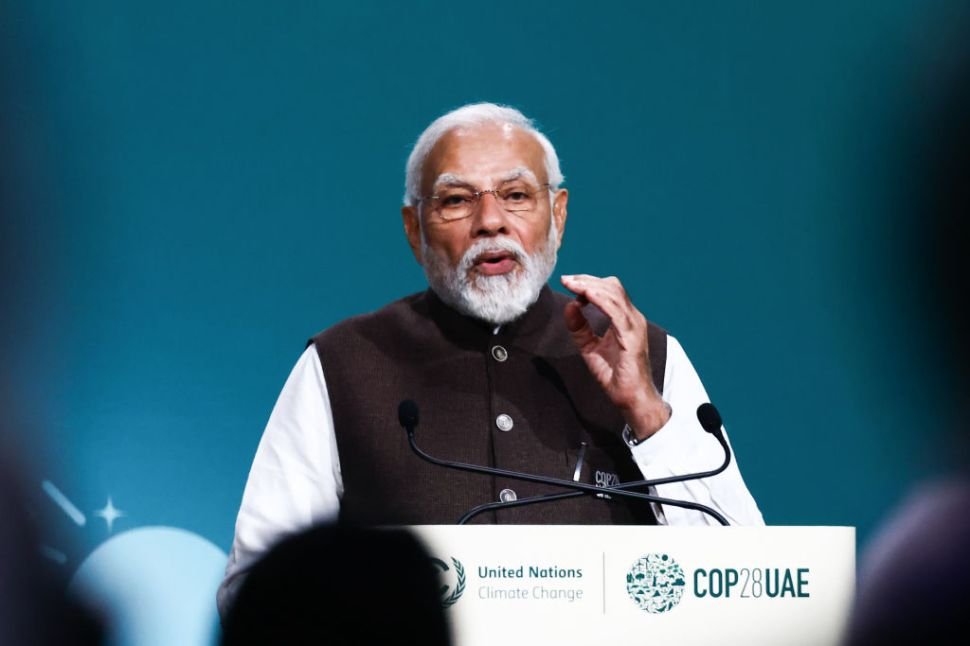
[ad_1]

For decades, China has been the world’s most notable growth story. That narrative is quickly changing as Wall Street investors shift their focus to India. In the last three months of 2023, U.S.-based Indian ETFs received record inflows, resulting in India briefly overtaking Hong Kong to become the world’s fourth largest stock market. Morgan Stanley (MS) predicts India’s stock market will further grow to be the world’s third largest by 2030. And the investment bank recently raised the weight of Indian equities in its Morgan Stanley Capital International (MSCI) benchmark, a common measure for global stock funds, to an all-time high of 18 percent.
The optimism, however, may not be a reflection of India itself. Viral Acharya, the former deputy governor of the Reserve Bank of India and currently an economics professor at the New York University, told Observer that much of this movement is driven by a “rotation away from China.” He estimated it could take China five to ten years to resolve its debt crisis, fueled by Covid-19 and its ongoing property crisis, making Western investors eager to look elsewhere for opportunity. “You can hedge risk, but you can’t hedge uncertainty,” Acharya said.
The same sentiment is echoed by Vikas Pershad, a Singaporean portfolio manager focusing on Asian equities. “People are interested in India for several reasons—one is simply it’s not China,” Pershad told Observer.
By many measures, India is an impressive growth story in its own right. The country overtook China as the world’s most populous last year and is expected to become the third largest economy by 2027. India’s incumbent political party, Prime Minister Narendra Modi’s Bharatiya Janata Party (BJP), has removed much red tape that plagued industries, eased regulation around foreign direct investment, and implemented pro-business policies. Upon strong signs in state elections of a re-election for Modi and the BJP in 2024, India’s stock market rallied. The country’s Nifty 50, a weighted average benchmark of the country’s 50 largest companies, broke records throughout 2023, marking eight years of continuous gains. In the third quarter of 2023, India’s economy grew by 7.6 percent, beating most banks’ forecasts.
However, India’s “potential peak growth is still under what China did achieve,” said Charles Robertson, FIM Partners’ head of macro strategy. Compare the numbers: India’s share of global manufacturing is a tenth of China’s, and its economy is around a sixth of China. The country produces half as many STEM graduates and spends less than half as much on research development as a percent of GDP. Four of the world’s ten largest tech companies are Chinese, none are Indian. A quarter of India’s human capital remains illiterate, compared to 1 percent of China’s. About 65 percent of the world’s A.I. patents belong to China while the country’s A.I. companies received $95 billion in private investment between 2013 and 2022. Those figures are 3 percent and $7 billion, respectively, for India.
But for now, a common belief shared by U.S. investors seems to be that India’s economy doesn’t have to be larger than China’s for its financial market to deliver consistent and high returns. Marshall Wace, a London-headquartered hedge fund led by Paul Marshall and Ian Wace with $62 billion in assets under management, has made India its largest bet after the U.S. in its flagship fund, while Switzerland-based Vontobel Holding AG has made India its top emerging market holding. Japan’s retail investors, traditionally some of the most cautious, have seen five India-focused mutual funds among their top 20 by inflows. One by one, many investment firms are looking away from China to India for their emerging market capital allocation.
[ad_2]
Source link





